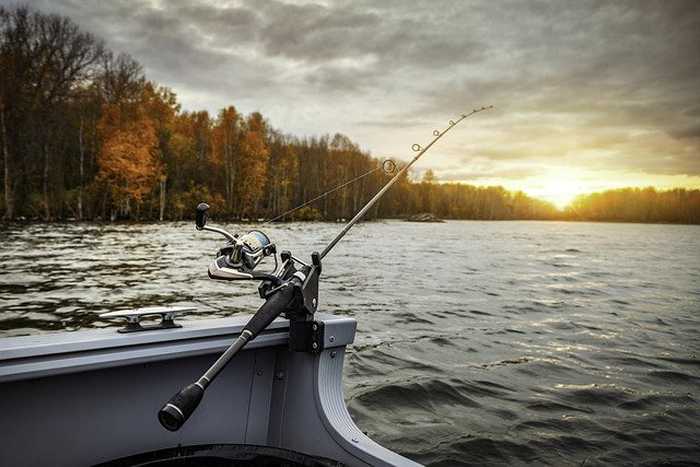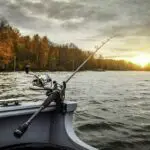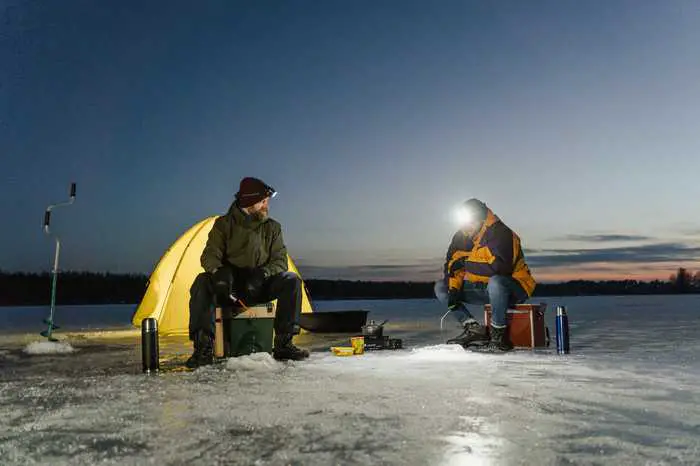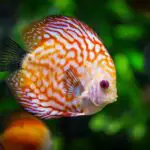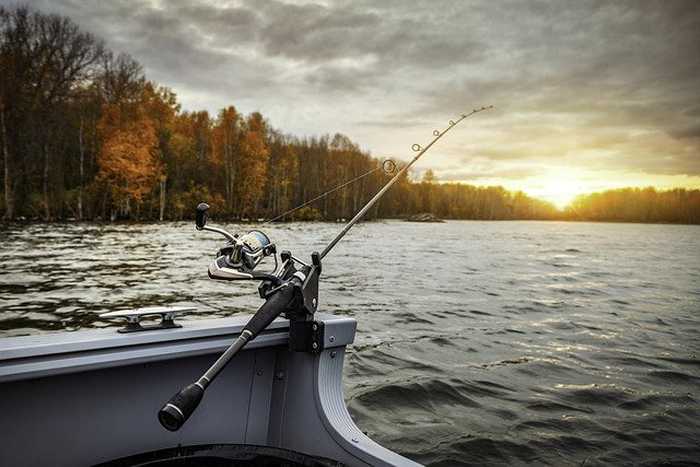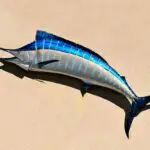Yes, crappie do bite after rain. But before you get too excited and head out to the lake, there’s one important thing to keep in mind: you can absolutely catch crappie in the rain.
That’s right – just because it’s raining doesn’t mean your chances of catching a crappie are zero. In fact, many anglers believe that fish are more active after a rainfall, so it could actually be an ideal time to go fishing for them.
Of course, there are certain factors that can affect how successful you’ll be at catching crappie in the rain. For example, if the rains have been heavy and continuous for days on end, the water level in the lake may have risen significantly. This could make it more difficult to find fish since they will have more places to hide.
Additionally, if the weather is cold and windy, it probably won’t be as pleasant to be out on the boat (or standing onshore). But if you dress appropriately and don’t mind getting a little wet, there’s no reason why you can’t enjoy some success going after crappie even when it’s raining.
1. What causes crappie to bite after rain?
Generally, most fisheries get a little dirtier after a rain because of all the rainwater washing in mud and debris. Crappie don’t like muddy water in most cases, and will hold tight to cover to feel secure in water they don’t see very well in. However, there are a few things that can cause crappie to bite after rain.
One is that the rain can actually trigger spawning activity in crappie. So if you’re fishing right after a storm, there’s a chance you could be targeting fish that are actively spawning and thus more likely to bite.
Another possibility is that the increased turbidity from rainfall can actually concentrate baitfish and other prey items, making them easier for predators like crappie to find and target. So even though the overall visibility might be reduced, there could still be areas where baitfish are congregating that are worth targeting.
Finally, it’s also worth noting that some anglers simply have more success fishing after storms regardless of any specific reason why. It could just be that the fish are more active or less wary due to all the commotion caused by the weather change.
2. How do you know if a crappie is biting after rain?
After a rain, the water clarity can be very important for finding cover. If there is a big brush pile in a channel swing or off the end of a point – that’s likely where crappie will be hiding after a rain if the water turns muddy. If you are fishing in an area with lots of cover, it can be difficult to tell if a crappie is biting. However, there are some signs that you can look for to determine if a fish is biting:
-The line may jerk or move suddenly -You may feel a light tap or pull on the line -The rod tip may dip or move
If you see any of these signs, it is possible that a crappie is biting your bait. To be sure, try gently pulling on the line to see if the fish resists.
3. What are the best techniques for catching crappie after rain?
After a rain, the best techniques for catching crappie are to fish in the thickest or most sturdy part of whatever cover you’re fishing, and to get your lure as close as possible to the fish. Crappie are likely to be deep in brush piles, right against pilings, etc., and they won’t move for much, so you need to get your lure close enough to them that they’ll bite.
4. Where do you find the most active crappie after rain?
After a heavy rain, the best place to find active crappie is around creek channel swings. Crappie tend to run in areas seasonally, so when the water drops they normally just go back to where they had been earlier in the season. However, if you don’t know that information, creek channel swings are a good place to start looking for crappie that have moved after a rainstorm.
5. When is the best time to fish for crappie after rain?
The best time to fish for crappie after rain is when the water clarity is back to normal. This means that finding cover in areas you’re fishing can be very important after a rain too. If there is a big thick brush pile in a channel swing or off the end of a point – that’s likely where crappie will be hiding after a rain if the water turns muddy.
6. What type of bait works best for catching crappie after rain?
After a rain, the best bait for catching crappie is usually a live minnow. I am a big proponent of using crappie lures rather than live bait whenever possible. They are more cost effective and more enjoyable to use, and finding the right lure to catch a big mess can be fun. However, live bait is often still the best option after a rain.
7. How long do you have to wait before fishing for crappie again after it rains?
The answer to this question depends on a few factors, including the intensity of the rain and the size of the body of water you’re fishing in. In general, though, you should wait at least 24 hours after it rains before fishing for crappie again.
Intensity of rainfall is an important factor to consider because heavy rains can cause dirt and debris to enter the water, making it murky and difficult to see. This can be especially true if there’s been flooding in the area. On the other hand, light rain might not have much of an impact on visibility.
The size of the body of water also matters. For example, a small pond is likely to clear up more quickly afterrain than a large lake. This is because all the water in a small pond turns over fairly regularly, so anything that’s stirred up by rainfall will eventually be diluted or filtered out completely. In contrast, it can take weeks or even months for all the water in a large lake to turn over once. As a result, any murkiness caused by rainfall will linger longer in a big lake than in a small pond.
8. Does the size of the Crappie change after it rains 9What effect does weather have on Crappies’ behavior 10
The size of the Crappie does not change after it rains. The weather does not have any effect on Crappies’ behavior.

